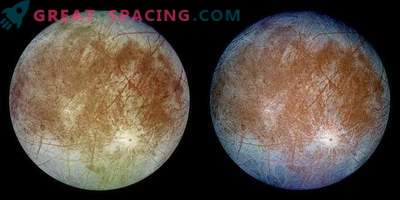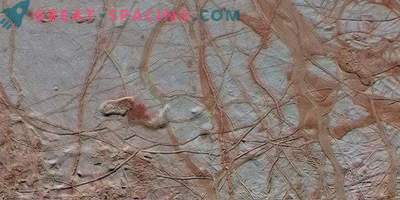
These natural ice spikes (calgaspores) are several feet high and are found in the dry plain of Chile. Can such formations threaten the safe landing of the apparatus on the satellite of Jupiter?
In the early 2020s. NASA plans to launch a spacecraft, which will be launched into the orbit of Jupiter’s satellite in Europe and may even place a descent module on the surface. This satellite is of great interest for study, as it is able to provide the conditions necessary for life.
In Europe, there is an icy surface and it is highly likely that liquid oceans are hidden under the crust. If there is water, then there are chances for life, at least in a simple form. Mission Europa Clipper - a spacecraft in a circular orbit of Jupiter. The vessel will be equipped with a set of tools for remote research and identification of potential locations where liquid water is able to come to the surface with chemical traces of life.
But where will the spacecraft be located?
Recently, a group of scientists published a study in which they indicate the serious potential dangers of landing a spacecraft in the equatorial territory of Europe. It is possible that there are jagged ice spikes (calgaspores) at the equator, which are found in some places on Earth. They can be close to each other and reach a height of 50 feet, which makes landing impossible. However, due to the orbit of the spacecraft, the equator is the best place to land. But research indicates the safest locations near the poles of Europe, which will force you to spend more fuel.
Calgaspores form in dry and high places at the equator of the Earth in South America and Africa, where the sun shines directly down onto icy patches. This causes the process of sublimation, which leads to the formation of ice peaks. Ice evaporates, rather than melts, creating uneven pits with gradual deepening.
Now it is impossible to say for sure whether these ice spikes are in Europe. Some believe that even if they are, they may be subject to space weathering caused by the additional radiation of Jupiter and the impacts of meteorites. But the rates of sublimation are also capable of advancing the speed of any extraneous influence. Researchers will try to better understand the situation and make recommendations regarding the best place for a safe landing.











































